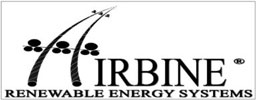There are many types of Airborne Wind Energy (AWE) systems. (See Information and Education section for additional details.)
AWE systems will continue to produce electricity when ground-based turbines stop spinning, because the wind blows more and with greater force at altitudes 1500 ft above ground level. (For Reference Papers and Links go to Information and Education.)
Airbine is a tethered balloon/aerostat with a built-in wind turbine.
Why is Airbine better than the other AWE systems? Because of the projected return on investment. This is found by a ratio that involves the footprint or the amount of land used, and the kilowatts produced. Airbine beats the competition because it isn’t just one single balloon-turbine on a tether but many, like beads on a string. So Airbine beats the competition by being not just a single wind turbine on a tether, but a whole wind farm. Like a “wind farm on a string”. This puts Airbine’s ratio (Kilowatts), kW/sq’ (square feet), better than any other AWE system.
Will Airbine work? Yes – The US Government mastered this technology decades ago! The Goddard Space Library, for years, provided access to research papers funded by the US Government on High Altitude Tethered Aerostats (HATA), and balloons. We just have to put the proven pieces of the puzzle together, with modern materials. Modern materials make Airbine even more feasible in 2023. Modern computers, telecommunications, AI and Drone Technology make our concept safer, more productive, and efficient. And government regulation is catching up to our goals and ideas because of the Green Energy Movement. Now is the time for Airbine.
NOTE: The pictures on the website were created long ago for an initial concept pitch and do not reflect the current, more streamlined design of Airbine. Please look for updated website art in 2024.
CURRENT PROGRESS:
We are in the middle of getting legal approvals for our headquarters in St George Utah and our 12-acre research facility in Leeds Utah.

